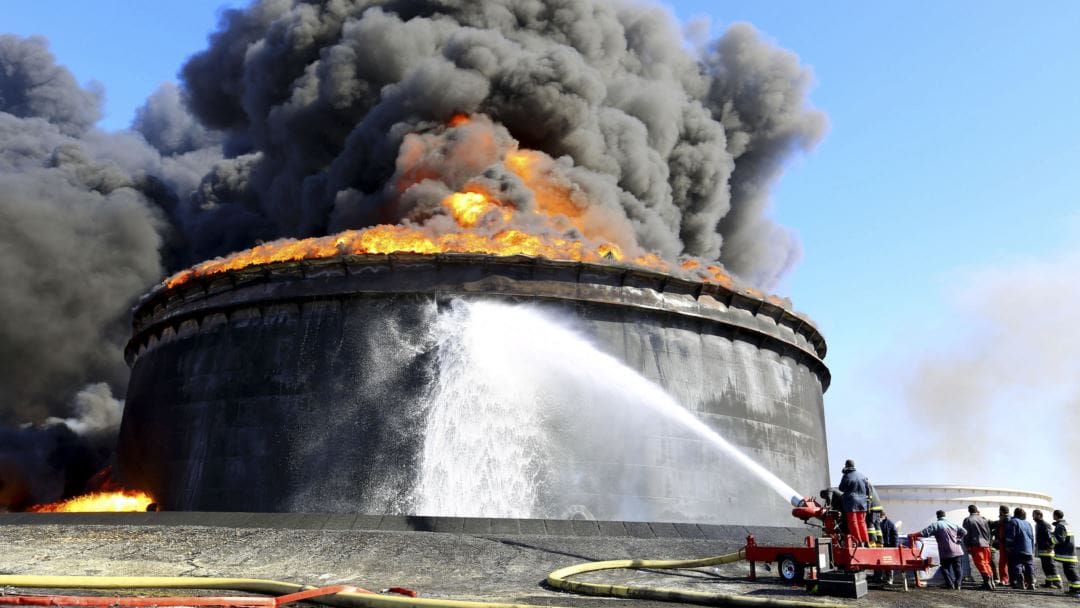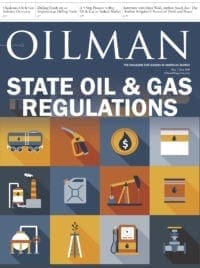Since the discovery of fire by our ancient ancestors, it had been something that is feared and awe inspiring. It can be our friend and it can be our foe, even at the same time. Despite all the technological advances we have made over time, fire is still an ancient problem that requires our full attention as it can happen anywhere without warning. This is especially true in the oil and gas industry, where fires can devastate wells, refineries, and storage tanks. These events can cost millions of dollars, harm the environment, engage firefighting resources for lengthy periods of time, disrupt supply, and in the worst-case scenario, there could be fatalities. Storage tank fires are the worst fires in the industry because the tanks are massive and store enough fuel for a fire to burn for weeks if not put out.

Large Diameter Atmospheric Storage Tanks
Tank fires can be truly terrible because of all the infrastructure damage they can cause and because they can also spread to other tanks at a facility. Tank fires can burn as hot as 1300 C and within about 5 minutes of burning, the temperature is about 500 C. The fire can destroy a tank’s structural integrity, reducing it by 80 percent. After the fire is extinguished, the associated costs continue to add up. Costs are experienced through tank downtime, the costs to repair and/or replace the damaged tanks, the charges from the fire department, etc.
It only takes 5 minutes for a tank to be a structural loss. This rapid rate of destruction is compounded by the fact that many fire departments take 30 to 100 minutes to arrive on the scene and battle the blaze. At this rate the tank is already a loss. However, rapid foam-based fire-suppression systems might just be the answer to the challenging problem.
Fire Extinguished in 3.14 Minutes
Pressurized Instant Foam Fire Suppression Systems can extinguish a full-tank surface fire in 3.14 minutes by using fourth generation foam technology. Andras T. Peller, Director of Swiss Fire Protection Research and Development AG (SFPRD), said “Even a [25 meter] diameter tank has a surface of 500 square meters, but we are already seeing giants built with [120 meters] in diameter —with the surface of an astonishing 11,500 square meters!”
Therefore, the older mobile system needs to produce 2,000 to 5,000 liters of foam per minute to cover that massive surface area. While the foam is a fire suppressant, it does not deploy fast enough. In older mobile systems, some 70 percent of the foam is burned away before getting to the surface of the fire.
All-inclusive Foam Solution
This volume-limiting factor is due to the limitations of the older technology that requires pumps to push the foam through the system. The more foam, the bigger the pumps need to be. Furthermore, there is the process of taking in enough air to push out the foam, which has a high resistance, slowing the deployment process even further.
The foam is self-expanding, which means that upon release it does not need to absorb air to gain its final form and acts as sort of its own self propellant, rather than relying on air pumps to push it out. The 3rd and 4th generations of the PI Foam Fire Protection System can now work independently of external energy sources on a mechanical basis.
The new technology is able to increase the deployment of foam because it removes many of the mechanical parts that slow down the process and replaces it with a self-pressurized foam that can rapidly suppress a fire with 80 to 90 liters of foam being deployed in a one-square-meter area per minute.
That equals 40,000 to 50,000 liters of foam per minute over 500 square meters, a 900 percent gain! This high-density deployment is key to how the system works.
To put this into perspective, the foam system water equivalent is equal to 160,000 liters per minute of water or 20 liters per minute per square meter. Keeping tanks safe from fire requires a quick response that a mobile fire suppression team cannot muster. A stable foam-based suppression system would be able to react within seconds of a fire starting and could suppress the fire within minutes without the loss of the tank’s structural integrity.
9 Rules of Fire Safety for Large Atmospheric Storage Tanks:
- Full surface fire extinguishing must start within 30 seconds of a fire breaking out.
- The entire surface must be covered in foam within 5 minutes to prevent structural damage.
- The foam application rate must exceed 20 L/ min/m2 which is more than 5 times the NFPA standard.
- The system must be free of the need for fire water.
- The system must be independent from a high energy power supply.
- The foam application device must be robust and resistant to explosions.
- The system must be a closed system and fully automatic.
- It must be able to extinguish rim seal and full surface fires within minutes and interchangeably.
- The system must be relatively maintenance free and human-error proof.
Source: SFPRD
Eissler, former editor-in- chief of Oil & Gas Engineering magazine, previously worked as an editor for Dubai-based The Oil & Gas Year Magazine.






